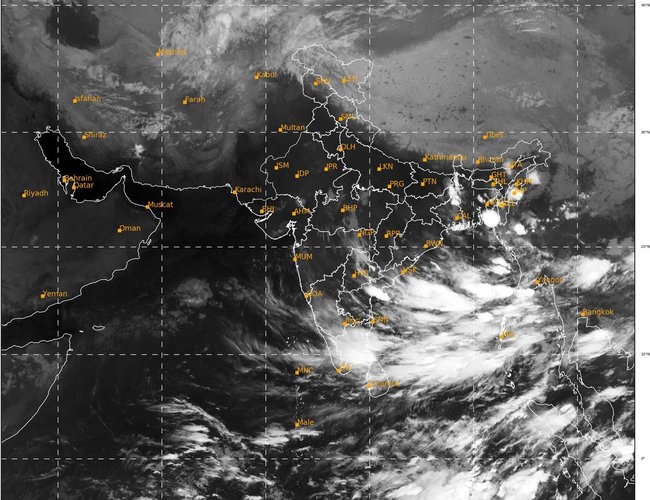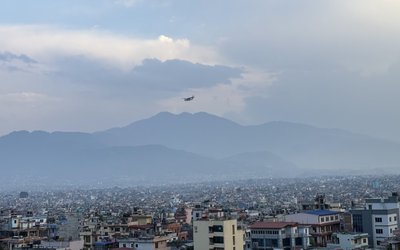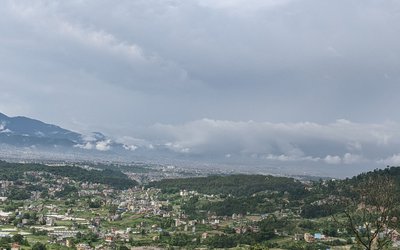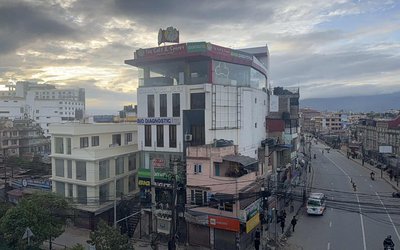
Below-normal rainfall is likely during the October – December (OND) season over the southern parts of the South Asia including some parts of extreme southeastern India, most parts of Sri Lanka and Maldives, which climatologically receive good amount of rainfall during the season.IMD Link
Below normal rainfall is also likely during the season over the northwestern and northern parts of South Asia including some areas along the foot hills of Himalayas. These areas, however, climatologically receive very low rainfall during OND season.
According to Indian Meterological Department, it was expressed during climate Outlook Forum (SASCOF-17) and Climate Services User Forum (CSUF) 23-24 and 28, September 2020 held online due to CoViD-19 pandemic.
However, above normal rainfall is likely over the land areas around northern and central Bay of Bengal, most parts of north peninsular India and southern parts of Myanmar. Normal rainfall is likely over the remaining parts of the region.
During the season, normal to slightly above normal temperatures are likely, over most parts of the region. This consensus climate outlook for the 2020 OND season over South Asia has been developed through an expert assessment of the prevailing global climate conditions influencing the South Asian climate and seasonal forecasts from different climate models around the world.
Currently weak La Niña conditions are prevailing in the tropical Pacific Ocean and neutral Indian Ocean Dipole (IOD) conditions are prevailing over the Indian Ocean. These parameters, which are known to influence the climate variability over South Asia are likely to continue at their current level during the OND season. Careful consideration is also given to other regional and global factors as well as the intra seasonal variability of the region that can affect the rainfall and temperature patterns over the region. For more information and further updates on the seasonal climate outlook on national scale, the respective National Meteorological and Hydrological Services (NMHSs) may be consulted.
During the October to December (OND) season, the southern parts of the South Asia receive significant amounts of rainfall which is critical for agricultural operations. The re-establishment of northeasterly trade-wind regime over South Asia associated with the southward movement of the Inter-Tropical Convergence Zone (ITCZ) ushers-in the Northeast monsoon, bringing much needed rainfall to the southern parts of India, Sri Lanka and Maldives.
In Sri Lanka, the October to November period is known as second Inter Monsoon (SIM) season. It has been recognized that there is moderate seasonal predictability for the Northeast monsoon circulation over the region as the seasonal variability is strongly influenced by the slowly varying boundary forcing like sea surface temperatures. However, the predictability is limited to some extent due to the strong day to day atmospheric variability caused by the passage of the synoptic scale weather systems such as easterly waves, lows, depressions, cyclones etc.
The seasonal predictability of the northeast monsoon over the region is also influenced by the Madden Julian Oscillation (MJO), which represent the major global scale intra-seasonal variability pattern. The climate outlook for the 2020 October to December season was finalized during the seventeenth session of the South Asian Climate Outlook Forum (SASCOF-17) held during 23-24 and 28th September 2020 via video conferencing in the backdrop of the current extraordinary circumstances of Covid-19 pandemic prevailing in the world.
The session was attended by experts representing the National Meteorological and Hydrological Services (NMHSs) of all the nine South Asian countries as well as those representing several global and regional climate agencies including World Meteorological Organization (WMO), WMO Regional Climate Centre (RCC) Pune, Indian Institute of Tropical Meteorology (IITM), Met Office (UKMO), International Research Institute for Climate and Society (IRI), Regional Integrated Multi-hazard Early-warning System (RIMES), Japan Meteorological Agency (JMA) etc. The online forum deliberated on various observed and emerging climate forcing that are known to influence the climate variability of the region such as the El Niño/Southern Oscillation (ENSO) conditions over the equatorial Pacific, Indian Ocean Dipole (IOD) conditions over the Indian Ocean etc. The key features of these climate forcing are briefly discussed below.
3 ENSO Conditions over the Pacific Ocean The ENSO is one of the global scale climate forcings that have significant influence on the year-to-year variability of the northeast monsoon rainfall as well as the surface temperatures over South Asia. The cool ENSO neutral conditions observed over the equatorial Pacific Ocean in the beginning of the year turned in to weak La Niña conditions by the end of August 2020.
Latest forecasts indicate that weak La Niña conditions are likely to continue during the October to December season. Conditions over the Indian Ocean In addition to ENSO conditions over the Pacific, other factors such as Indian Ocean sea surface temperatures have some influence on the climate variability of the region. Neutral IOD conditions are prevailing over equatorial Indian Ocean since July 2020.
Recent forecasts from majority of the coupled models suggest that these conditions are likely to continue during October to December season. Consensus Outlook for the 2020 October to December Season Rainfall over South Asia: A consensus outlook for October to December season rainfall over South Asia has been prepared based on the expert assessment of prevailing large-scale global climate indicators mentioned above and experimental as well as operational longrange forecasts based on statistical and dynamical models generated by various operational and research centers of the world.
There is unanimity among the experts that the prevailing weak La Niña conditions in the equatorial Pacific Ocean and Neutral Indian Ocean Dipole conditions over Indian Ocean are likely to continue during October to December season. The relative impact of all these parameters needs to be considered to determine the expected state of the climate over the region during the season. The outlook for the 2020 October to December season rainfall over South Asia is shown in Fig.1.
The figure illustrates the most likely tercile category1 as well as its probability for each of the 1o latitude x 1o longitude spatial grid boxes over the region. The box-wise tercile probabilities were derived using an objective approach from an initial set of gridded forecasts from multiple GCMs and consolidated through a consensus building discussion among climate experts.
The outlook suggests that during the 2020 October to December (OND) season, below-normal rainfall is likely over the southern parts of the South Asia including some parts of extreme southeastern India, most parts of Sri Lanka and Maldives, which climatologically receive good amount of rainfall during the season. Below normal rainfall is also likely during the season over the northwestern and northern parts of South Asia including some areas along the foot hills of Himalayas. These areas, however, climatologically receive very low rainfall during OND season. However, above normal rainfall is likely over the land areas around northern and central Bay of Bengal, most parts of north peninsular India and southern parts of Myanmar. Normal rainfall is likely over the remaining parts of the region. During the season, normal to slightly above normal temperatures are likely, over most parts of the region.
Source of news and photo: Indian Meteorological Department
- The Situation Pushes Women Journalists To Speak Louder, Experts Emphasize
- Jun 30, 2025
- SPI NEPAL: Prosperity Through Clean Energy
- Jun 30, 2025
- PM Oli Meets Spanish Prime Minister
- Jun 30, 2025
- FM Dr. Rana Said Nepal recognises constitutional guarantees to citizens' right to food
- Jun 30, 2025
- Weather Forecast: Generally Cloudy With Heavy Rainfall Is Likely In One Or Two Places Of Kathamandu, Biratnagar And Pokhara
- Jun 30, 2025















